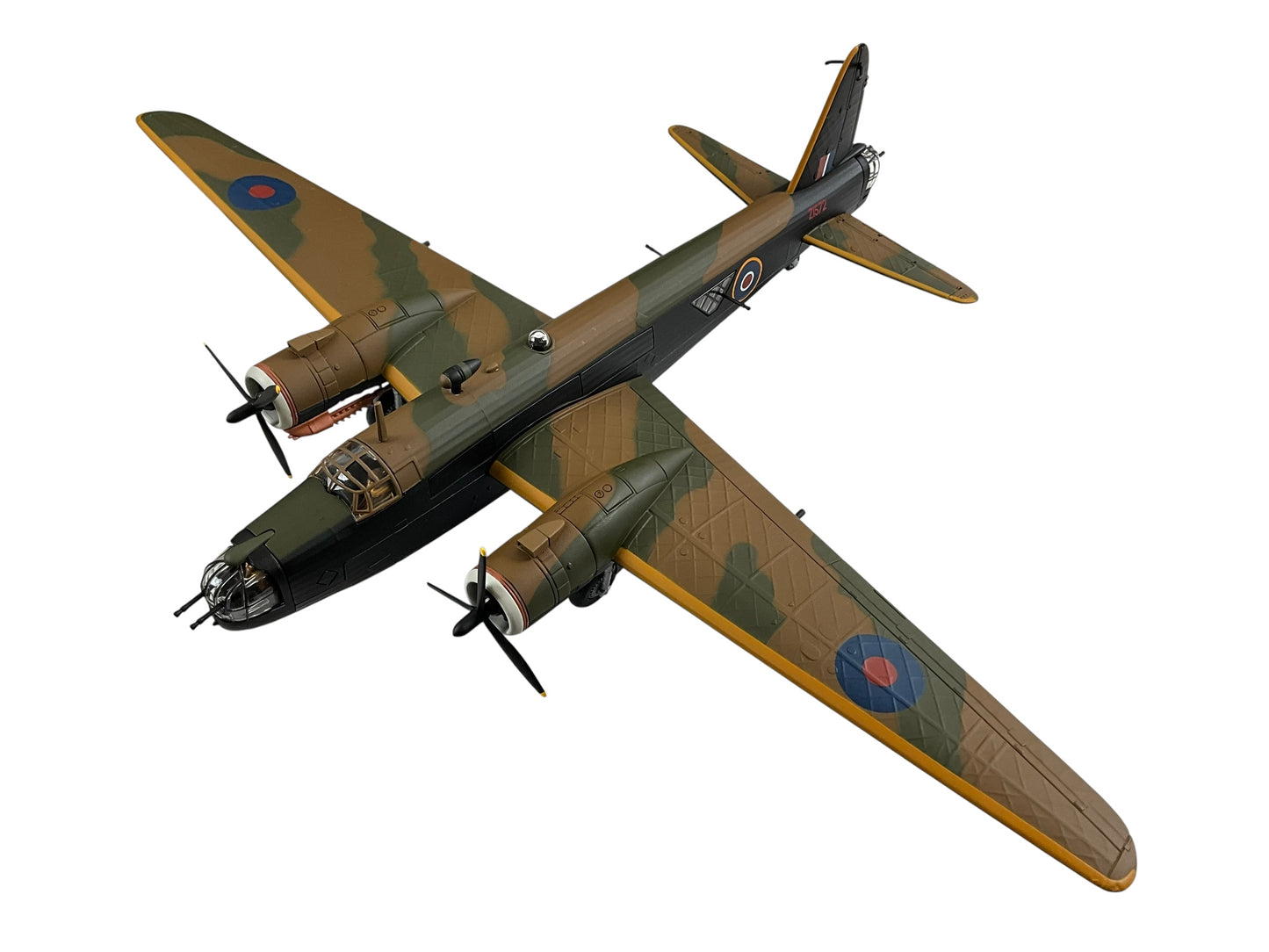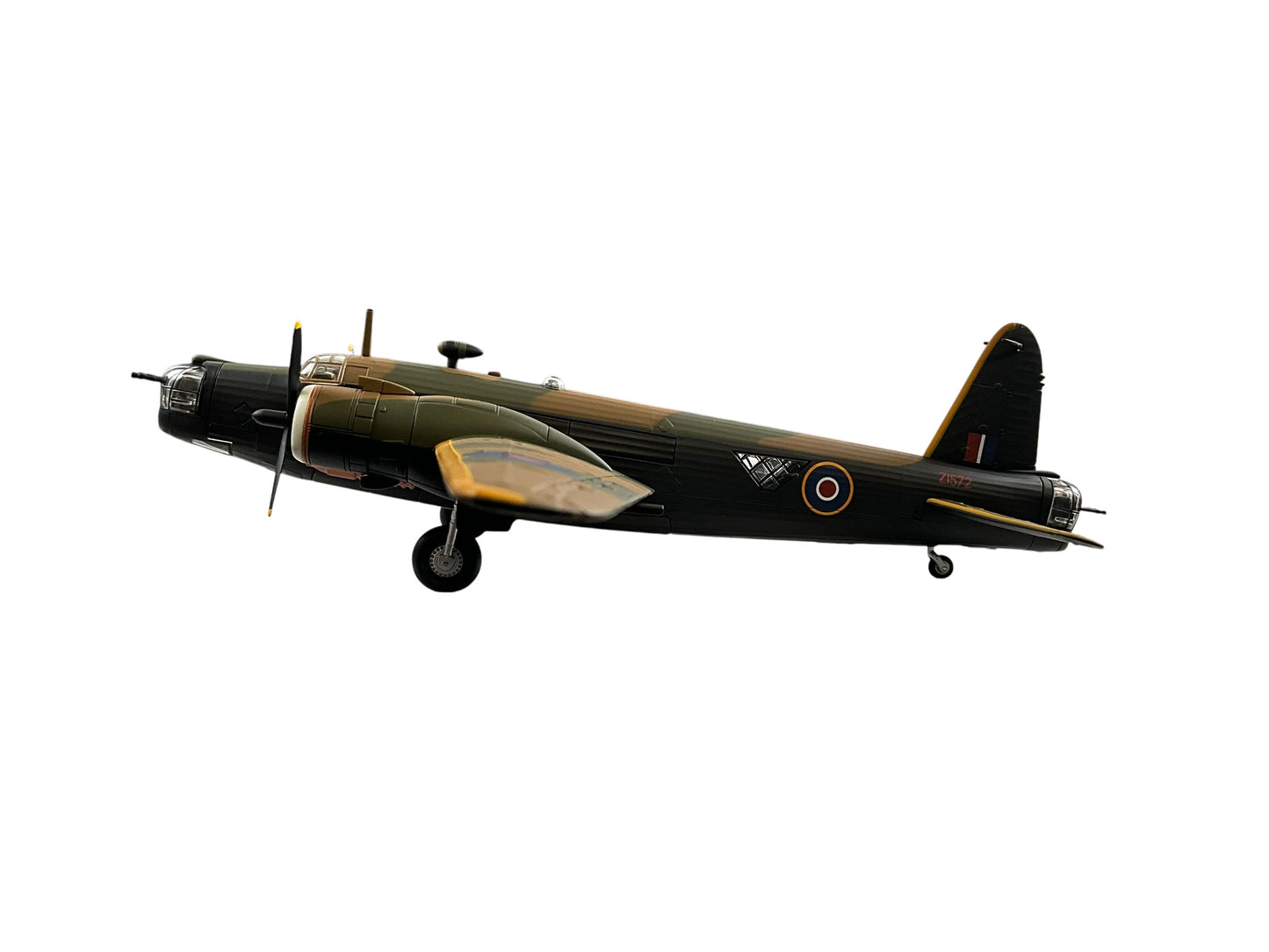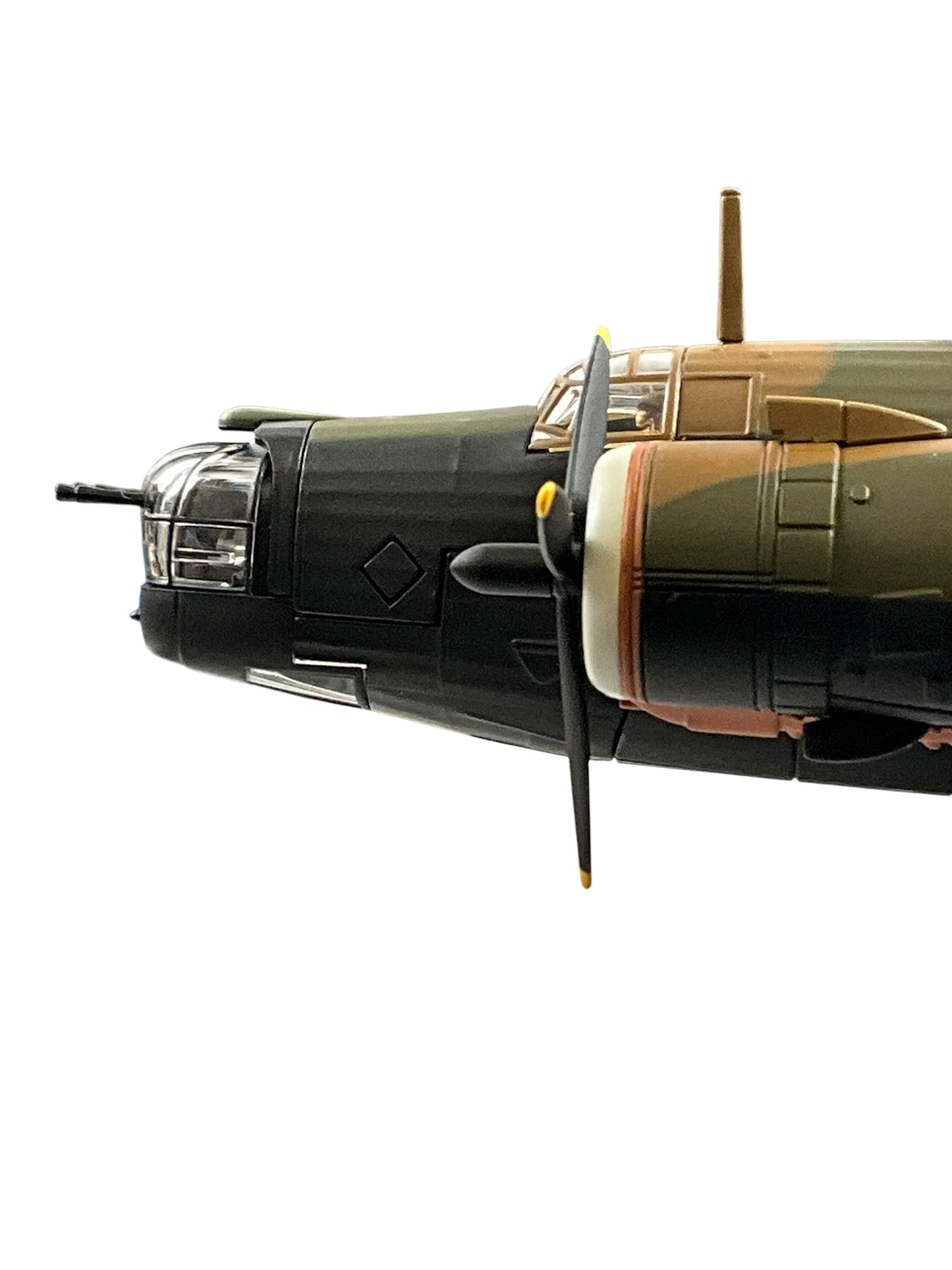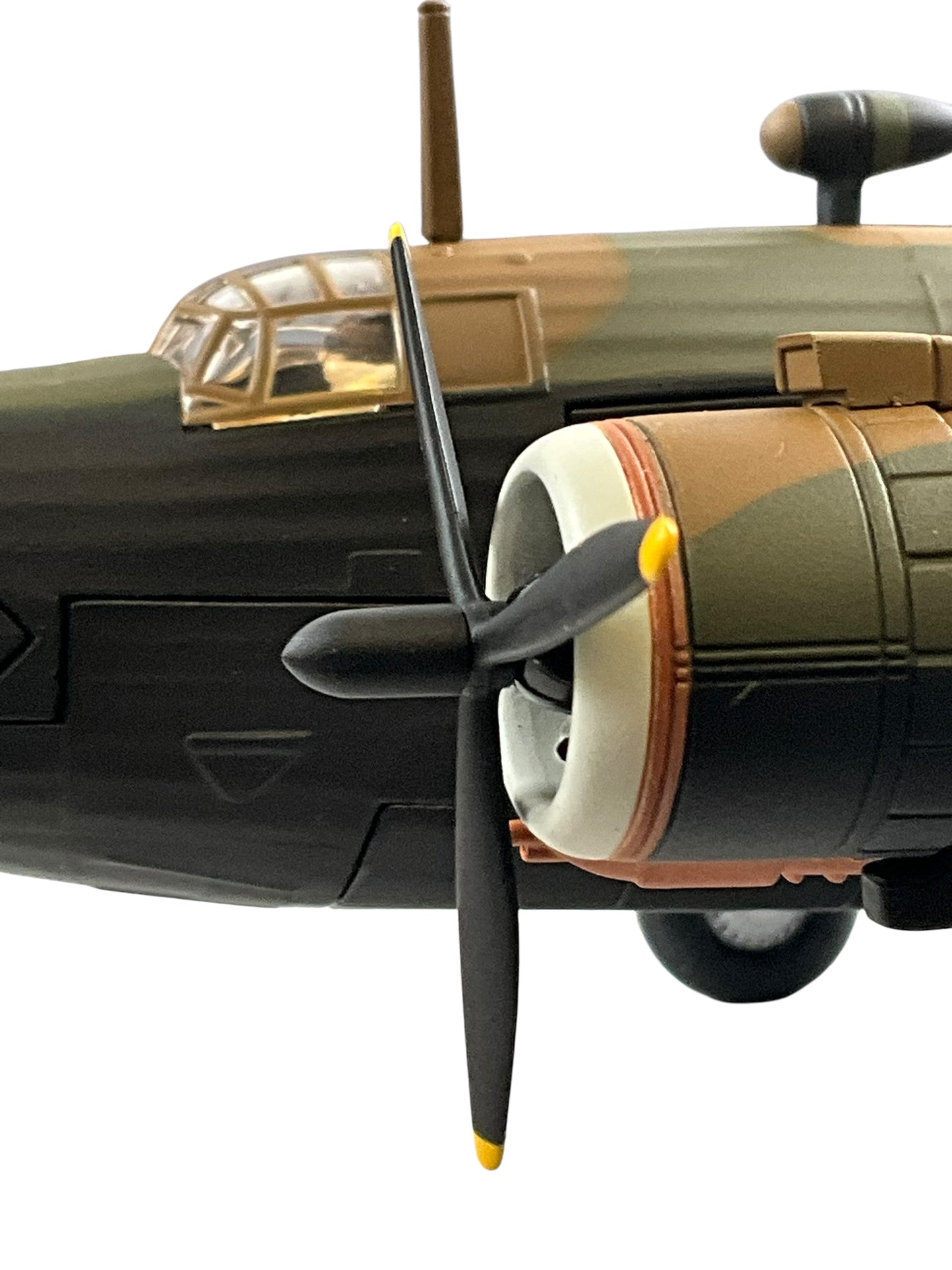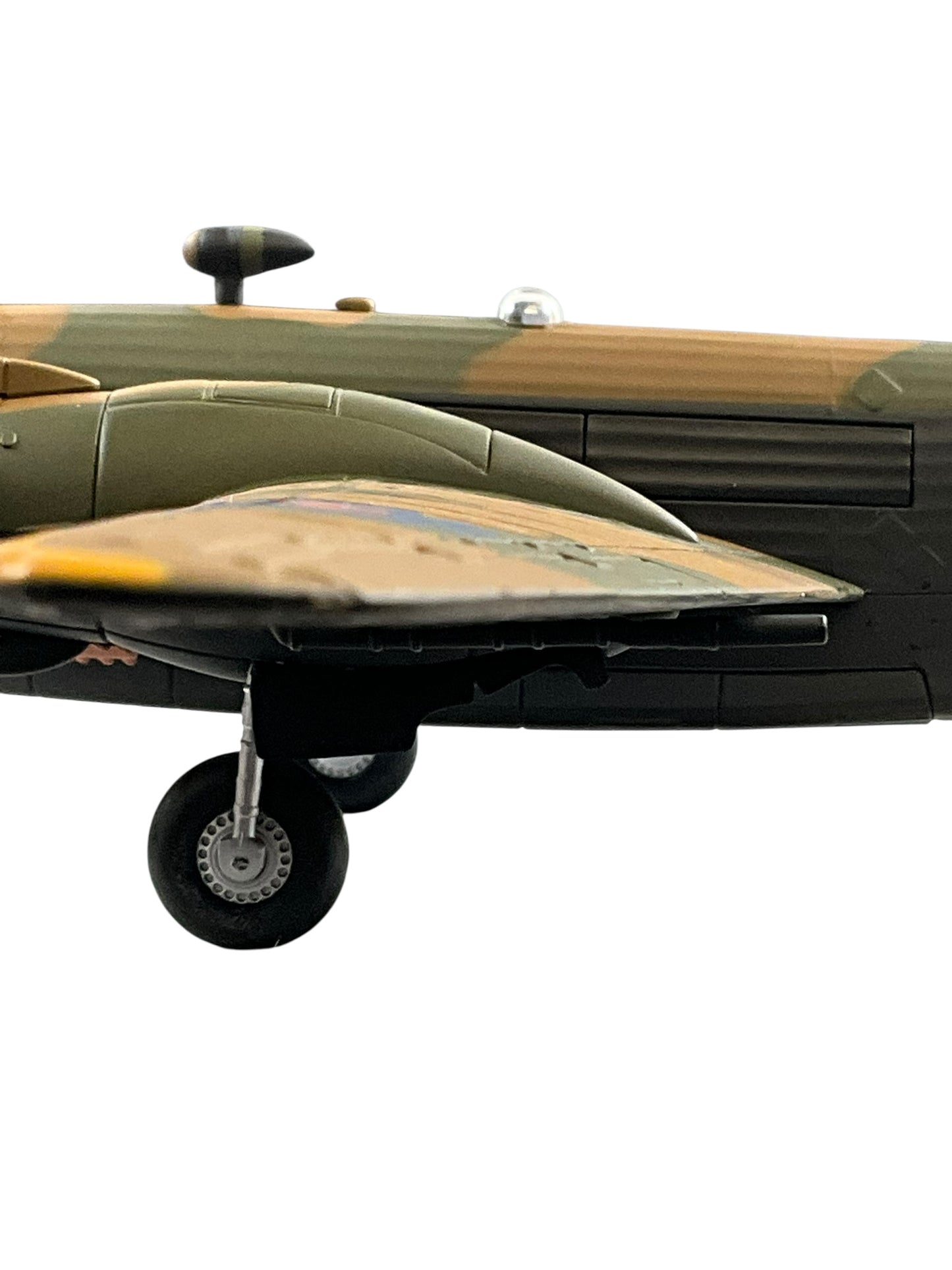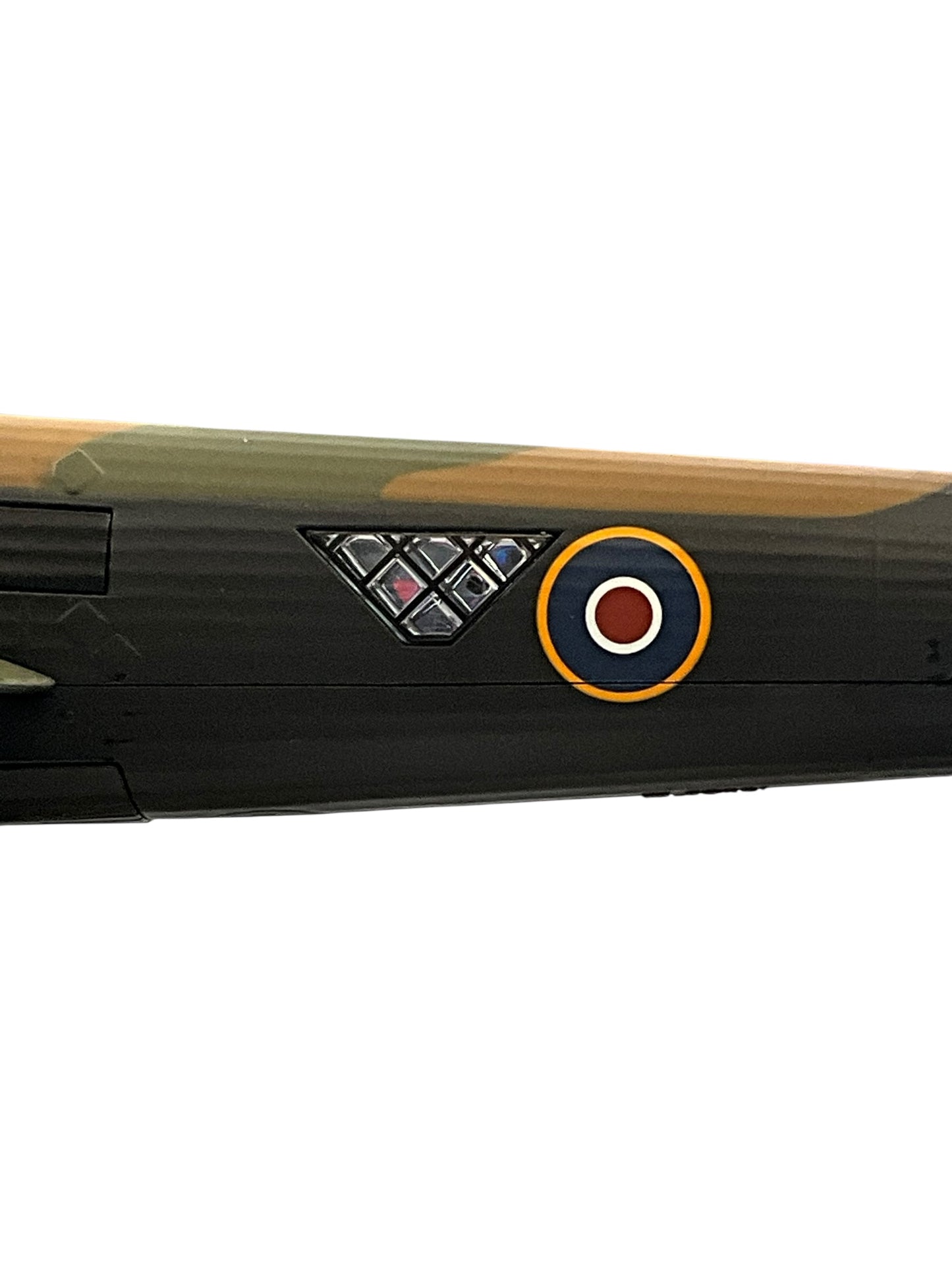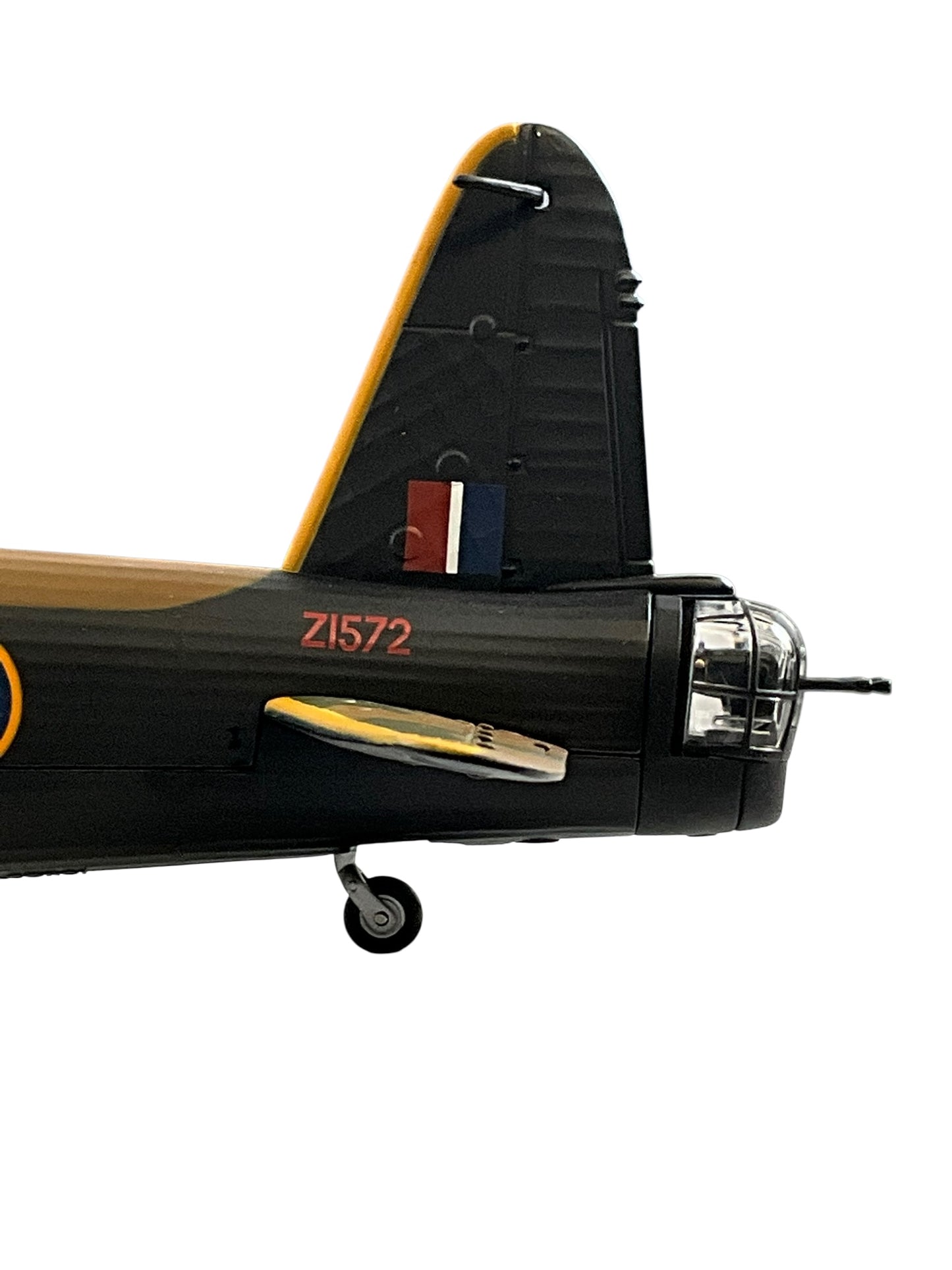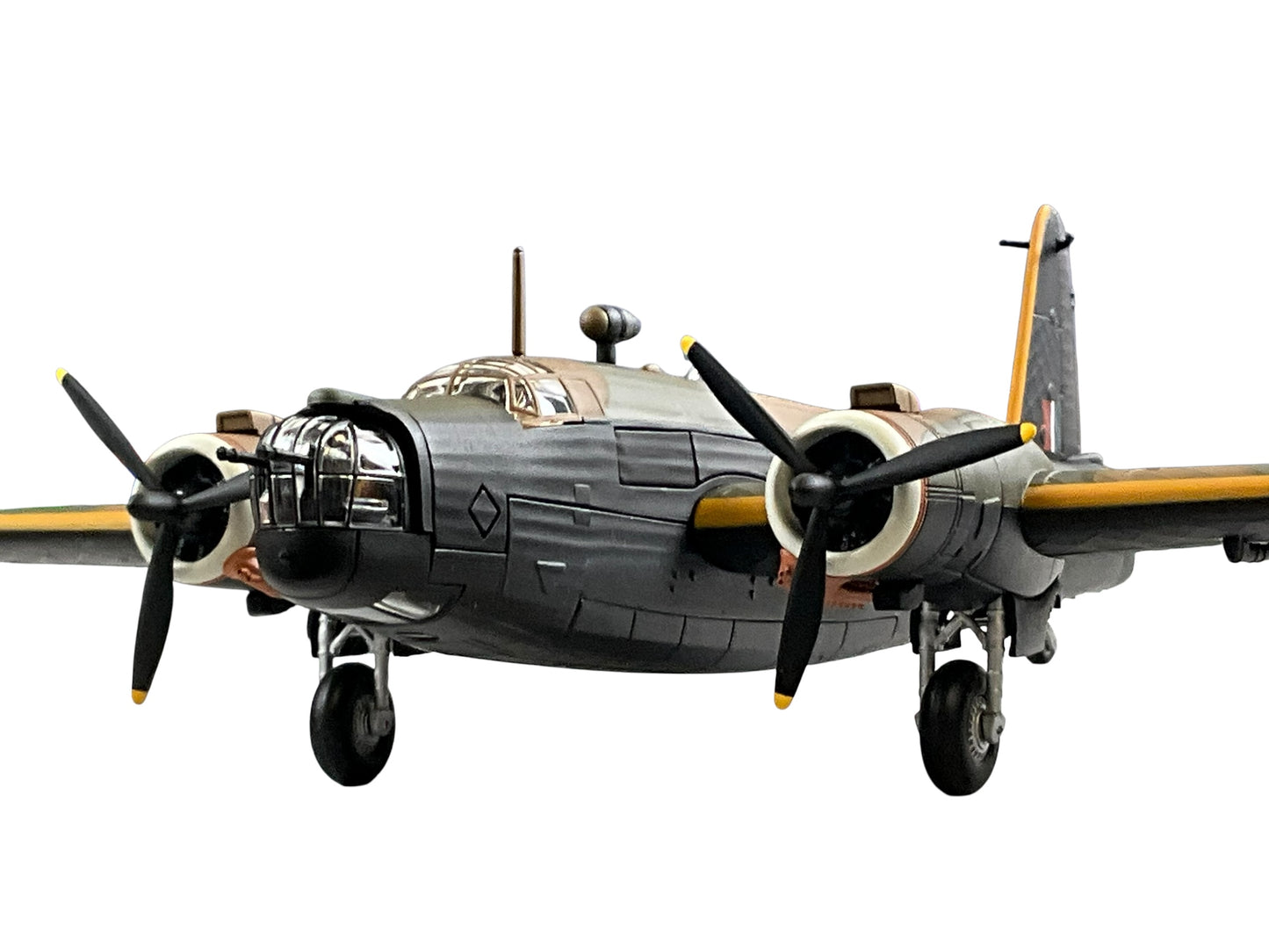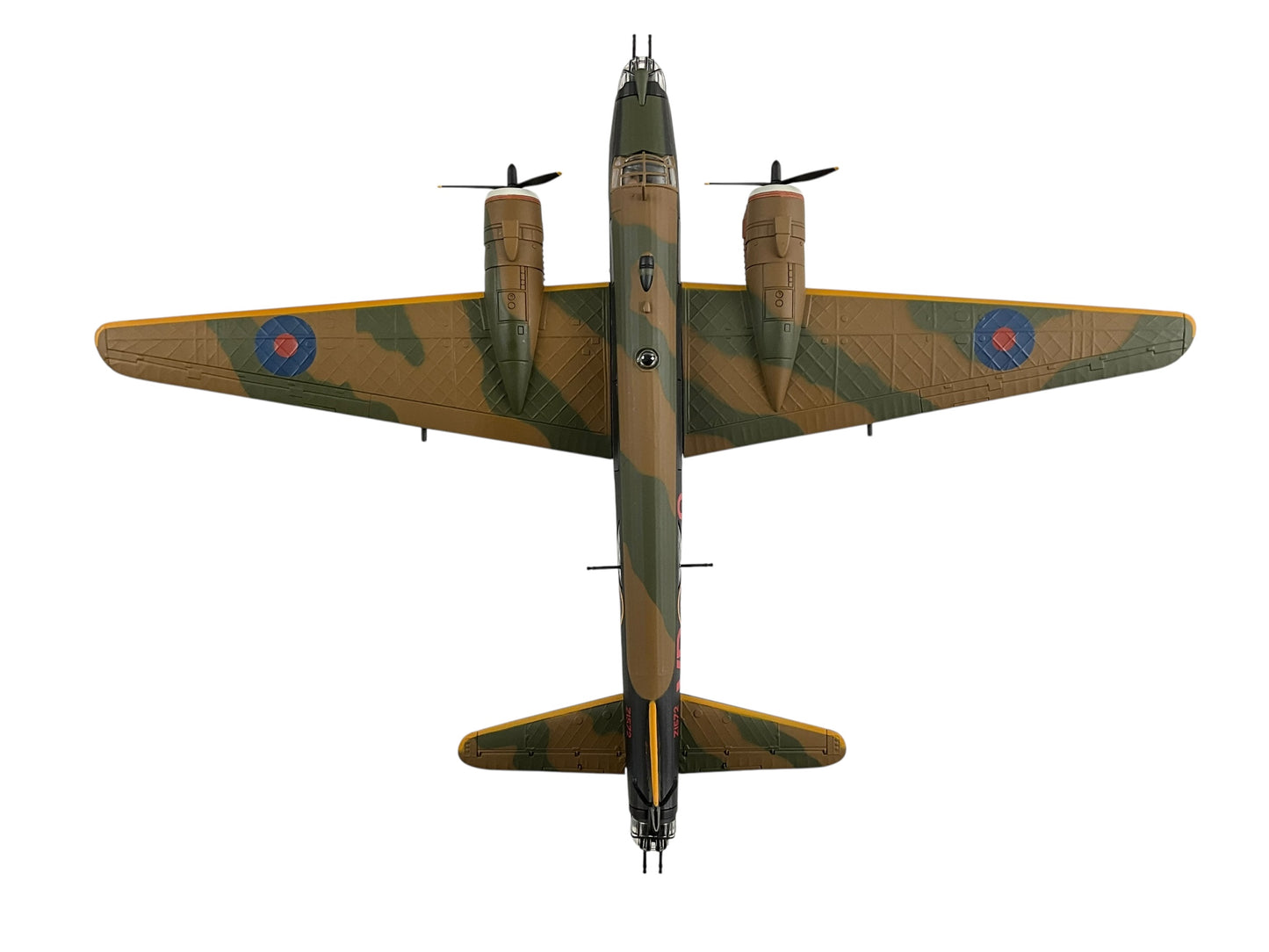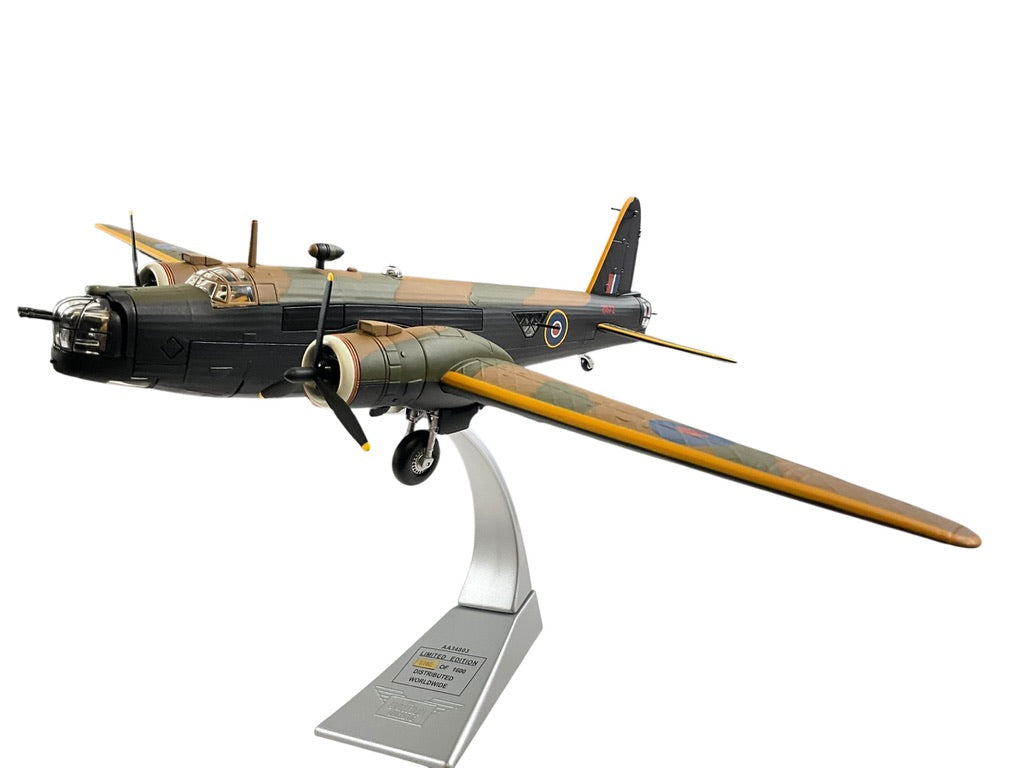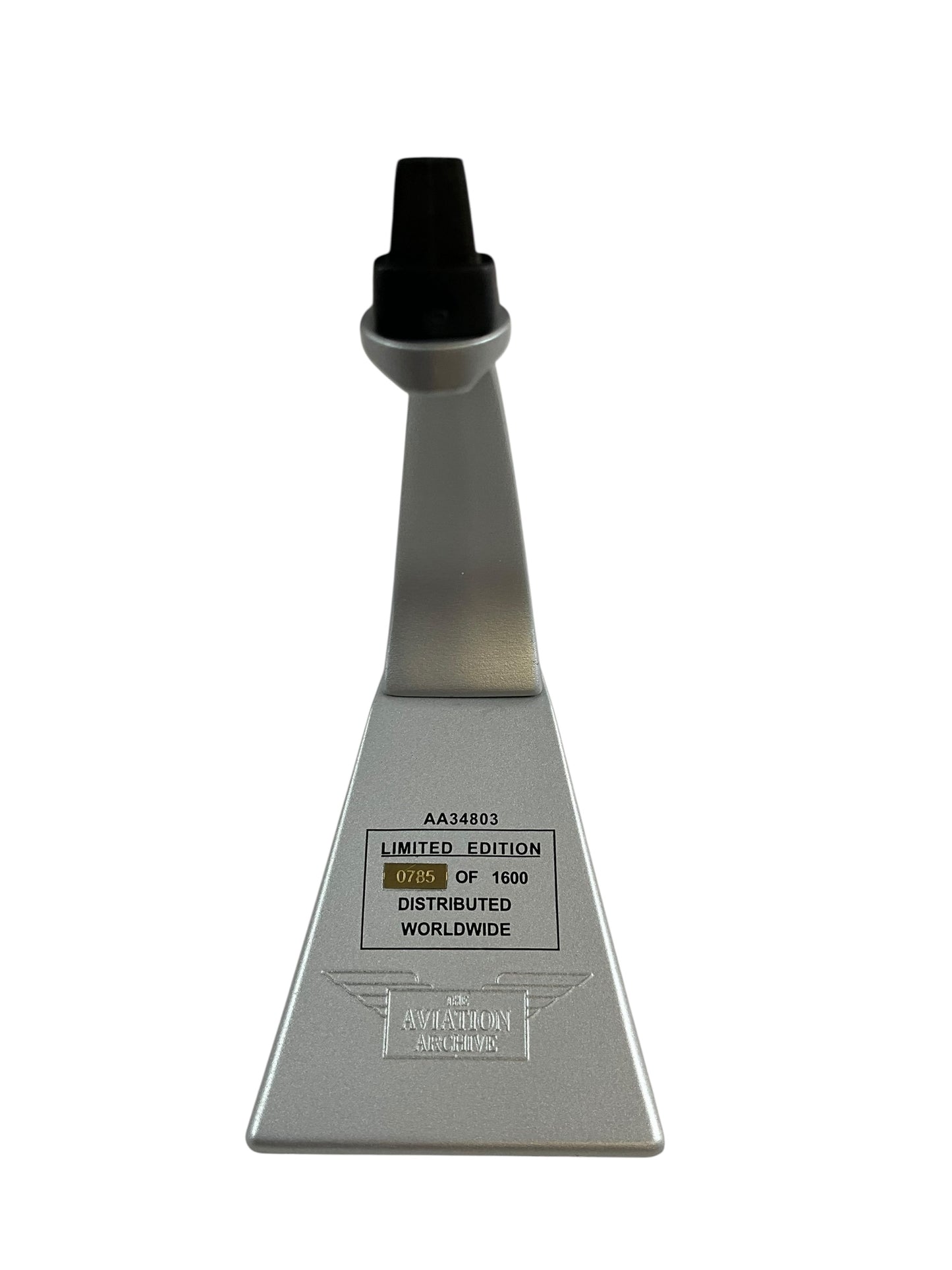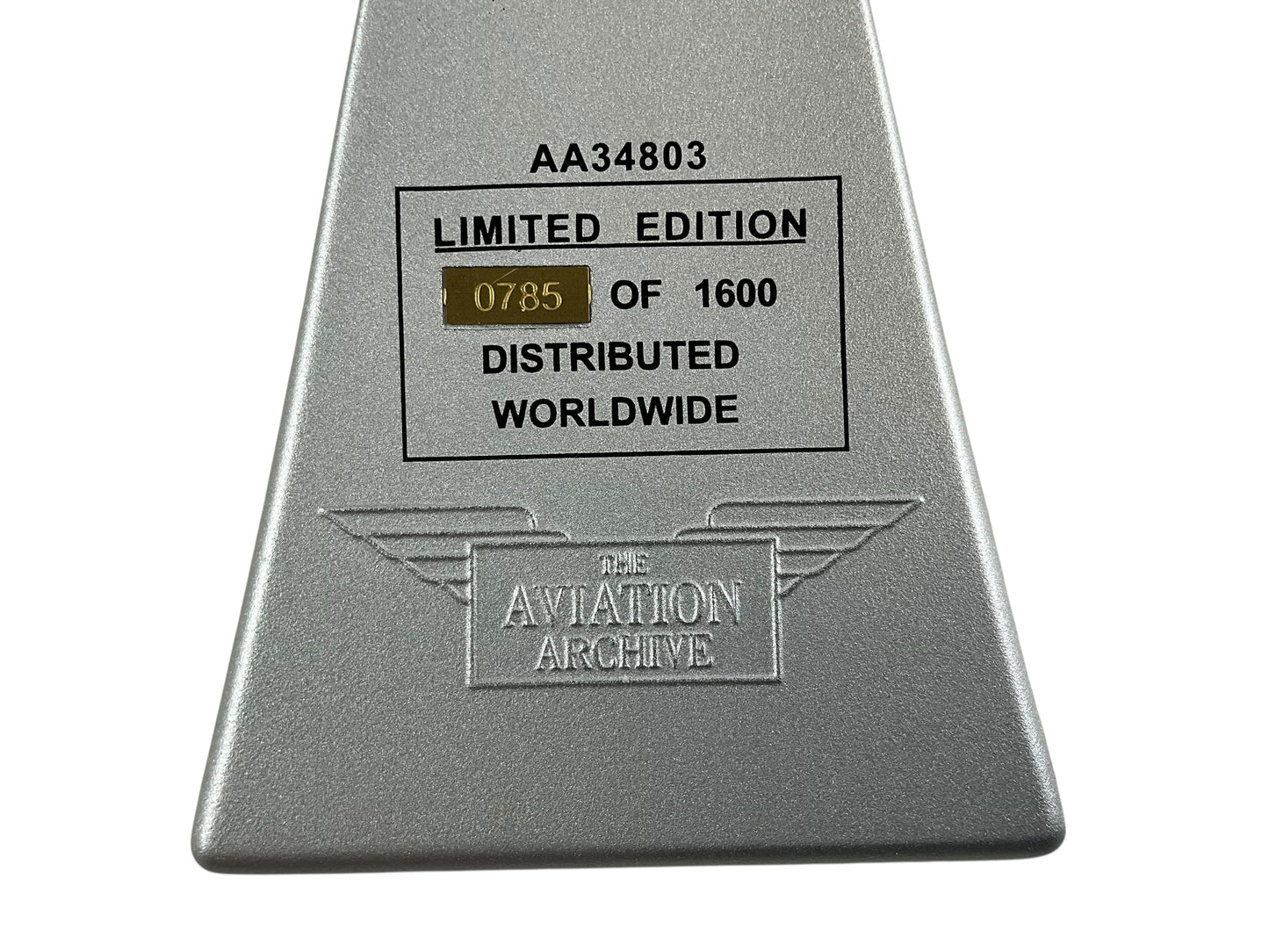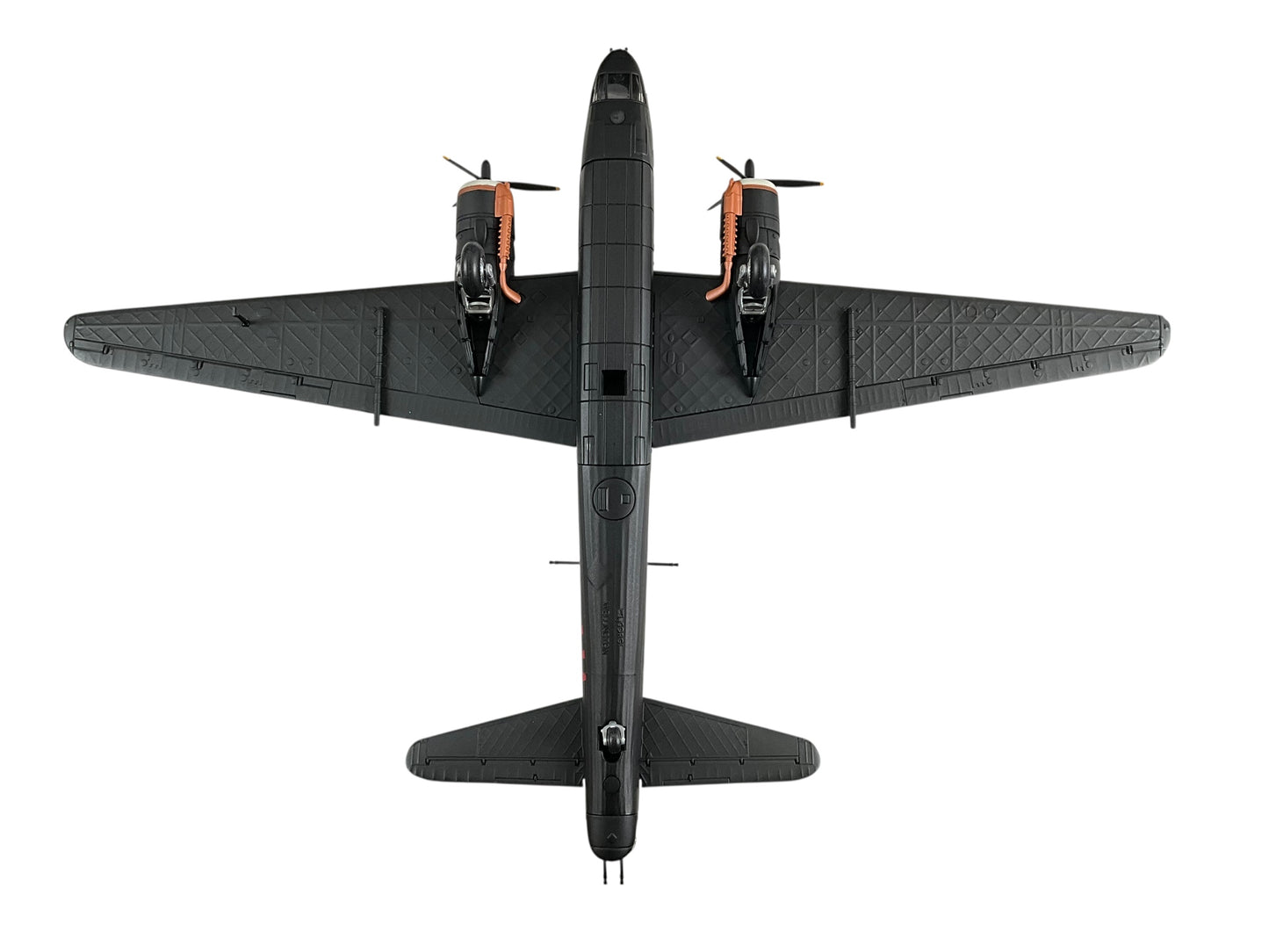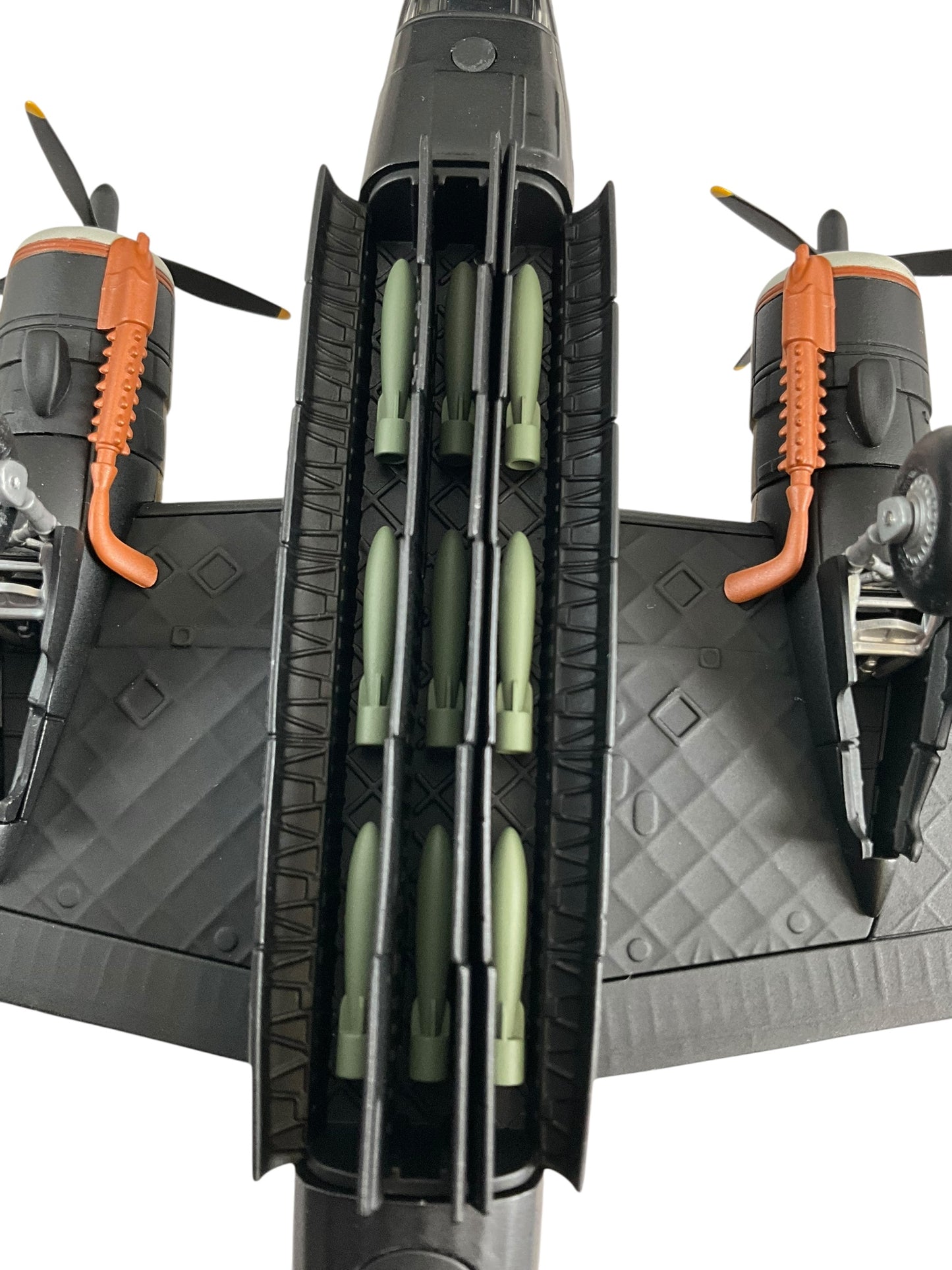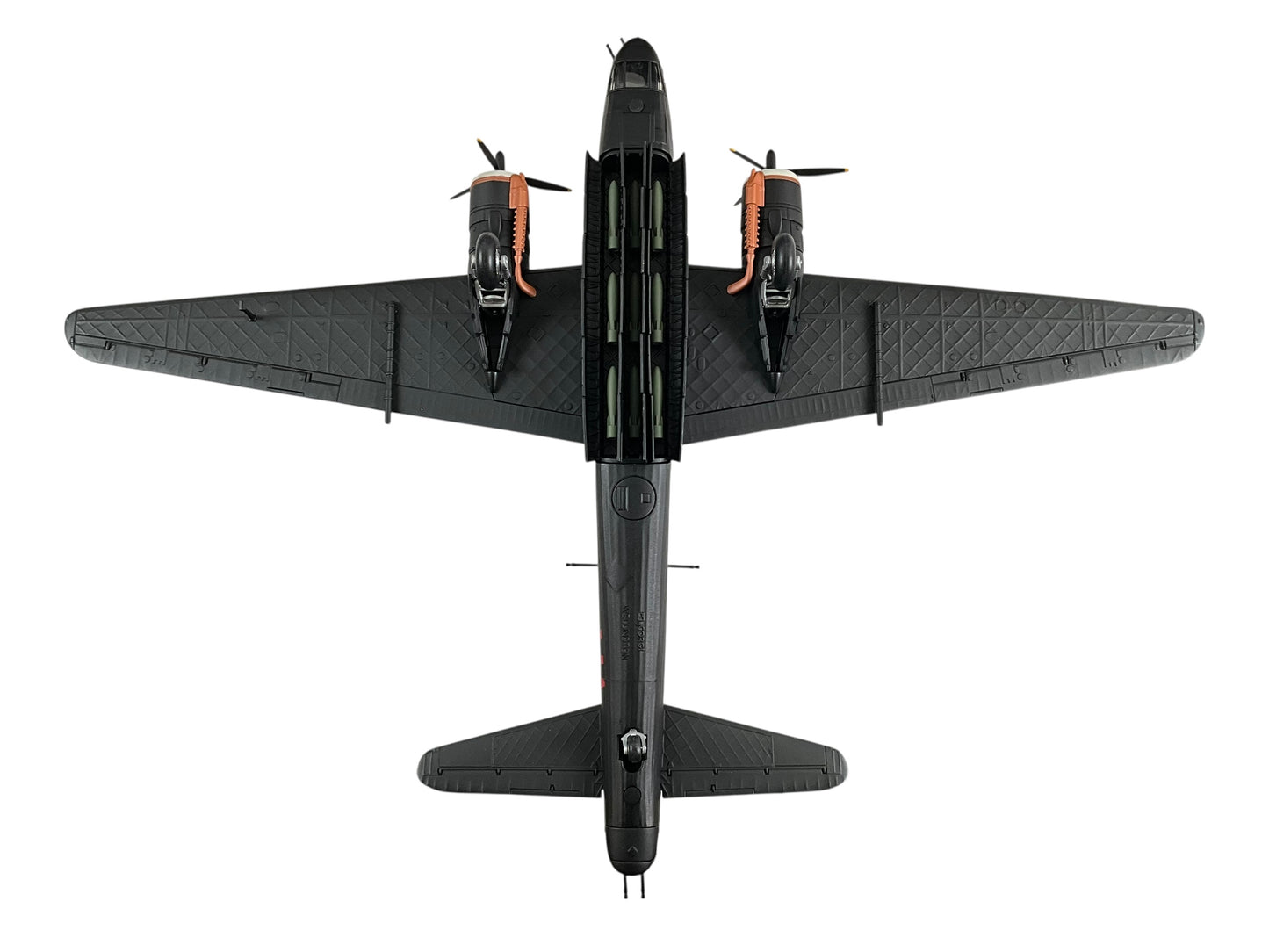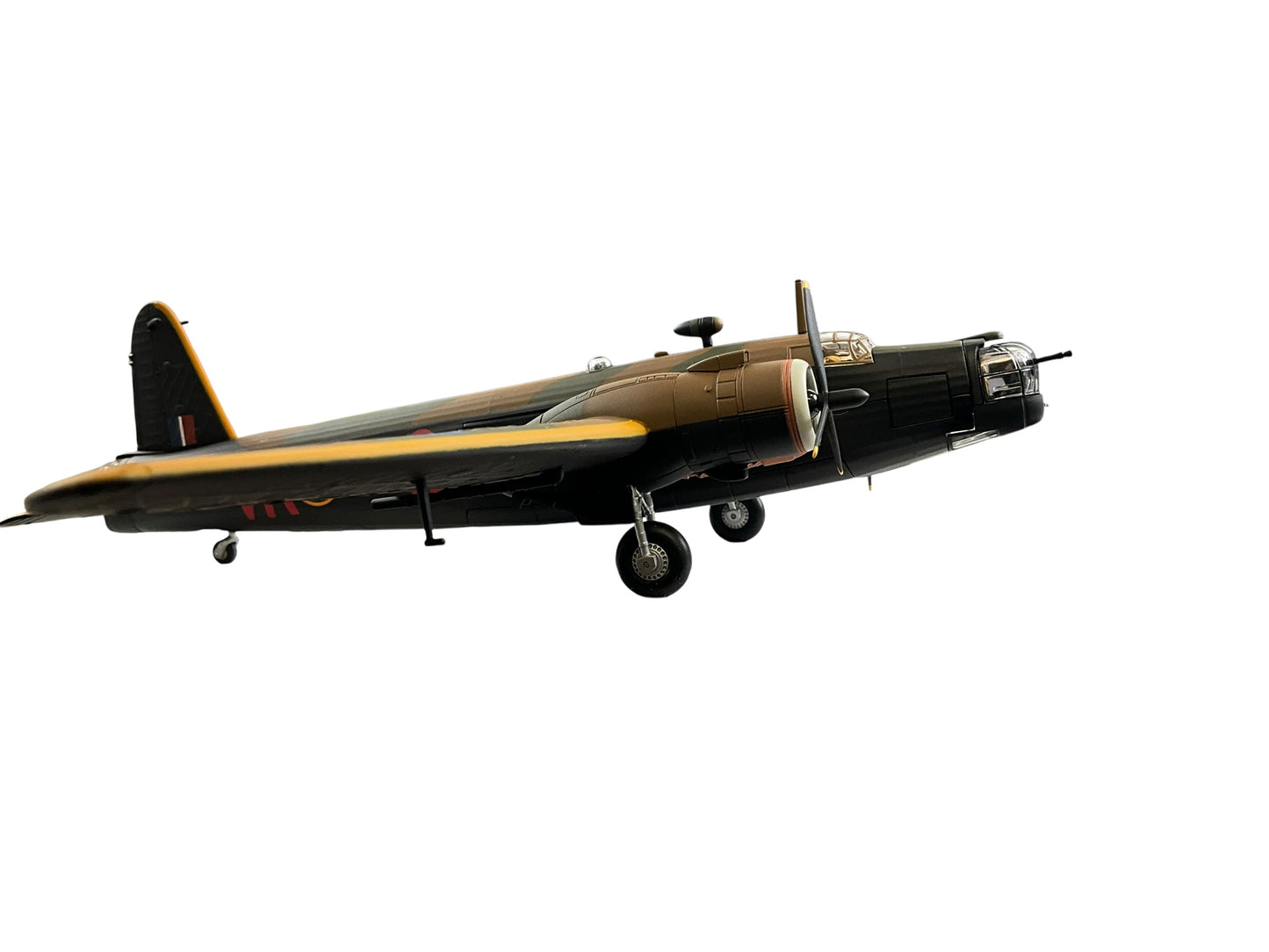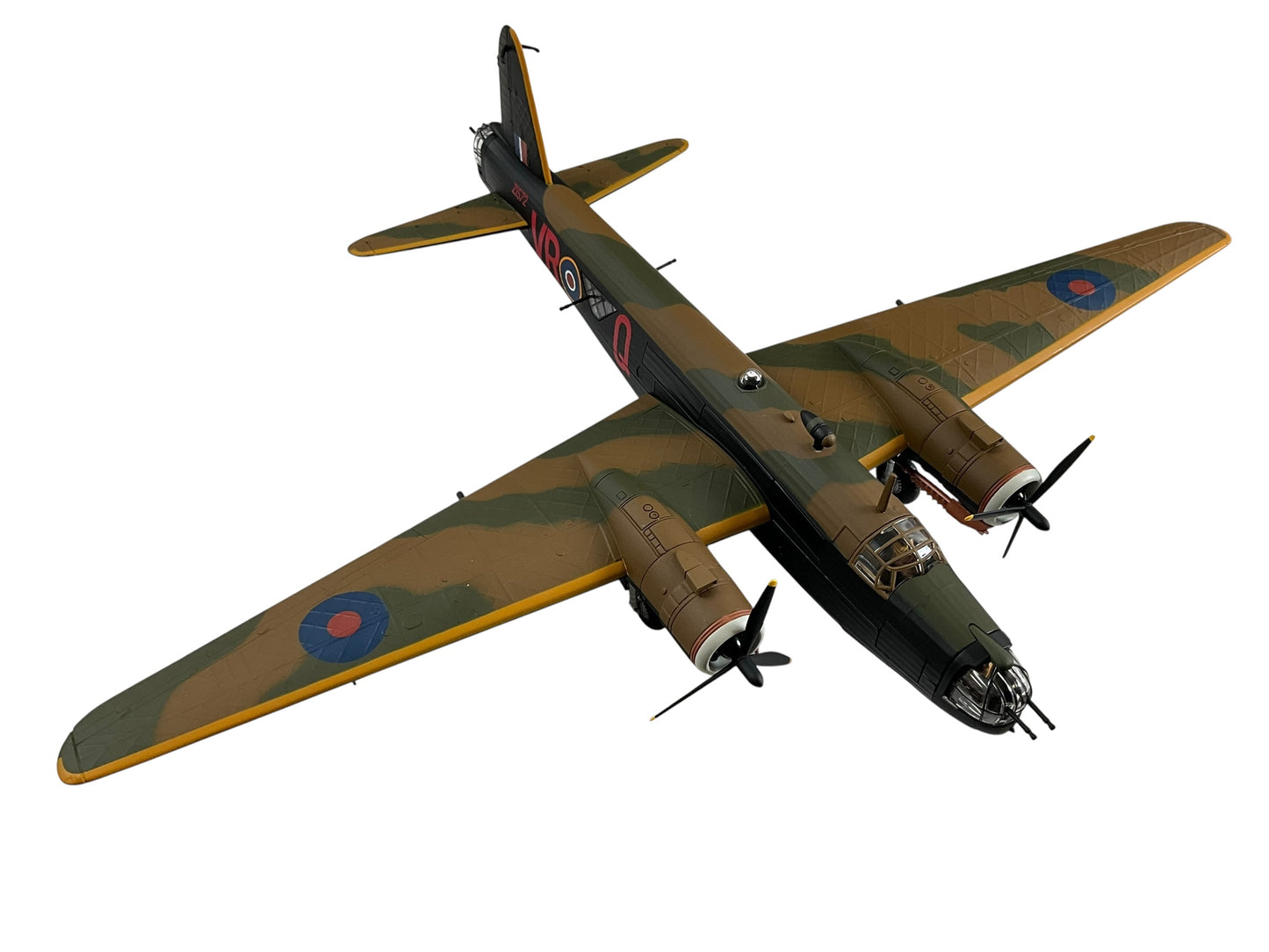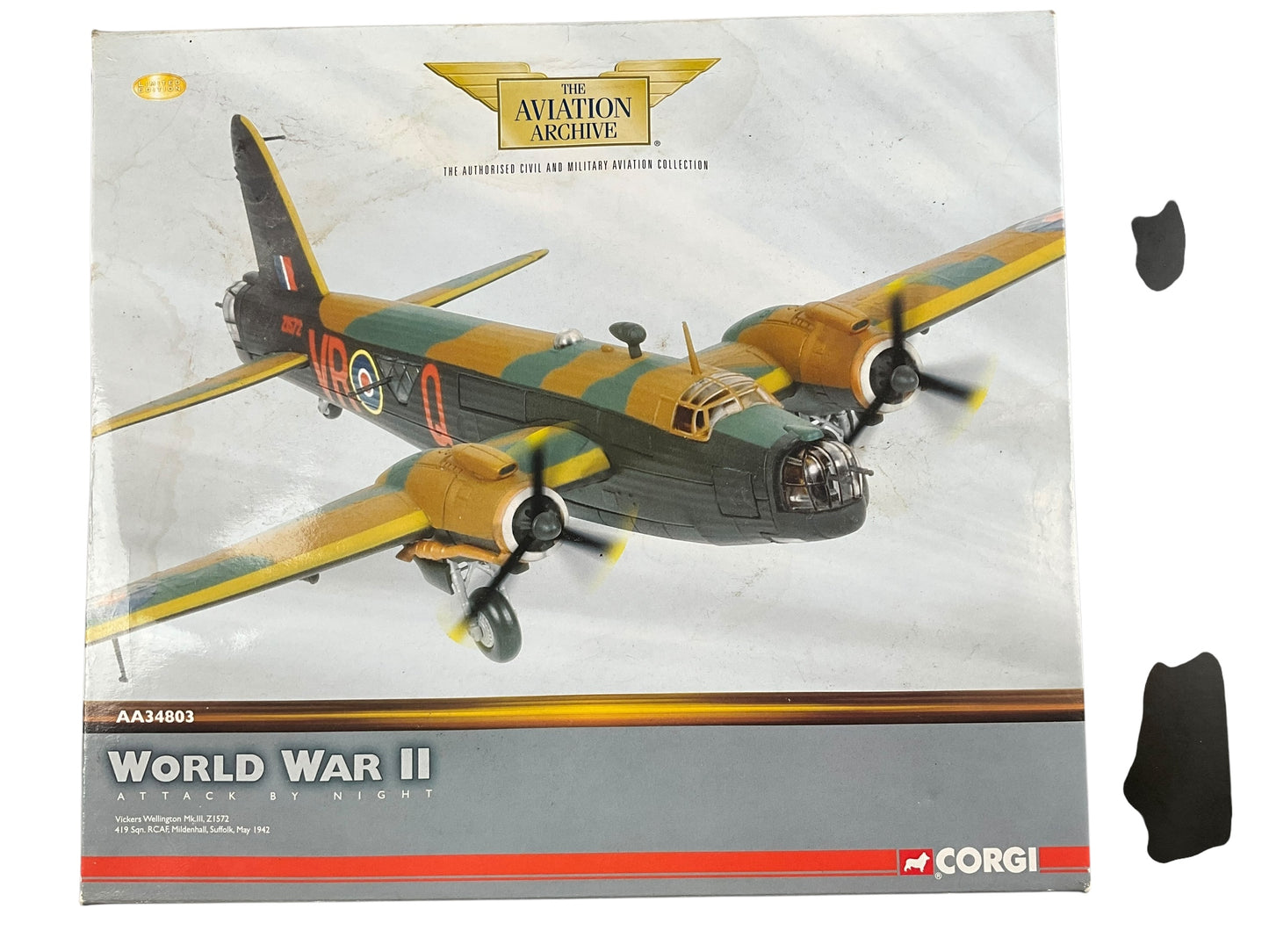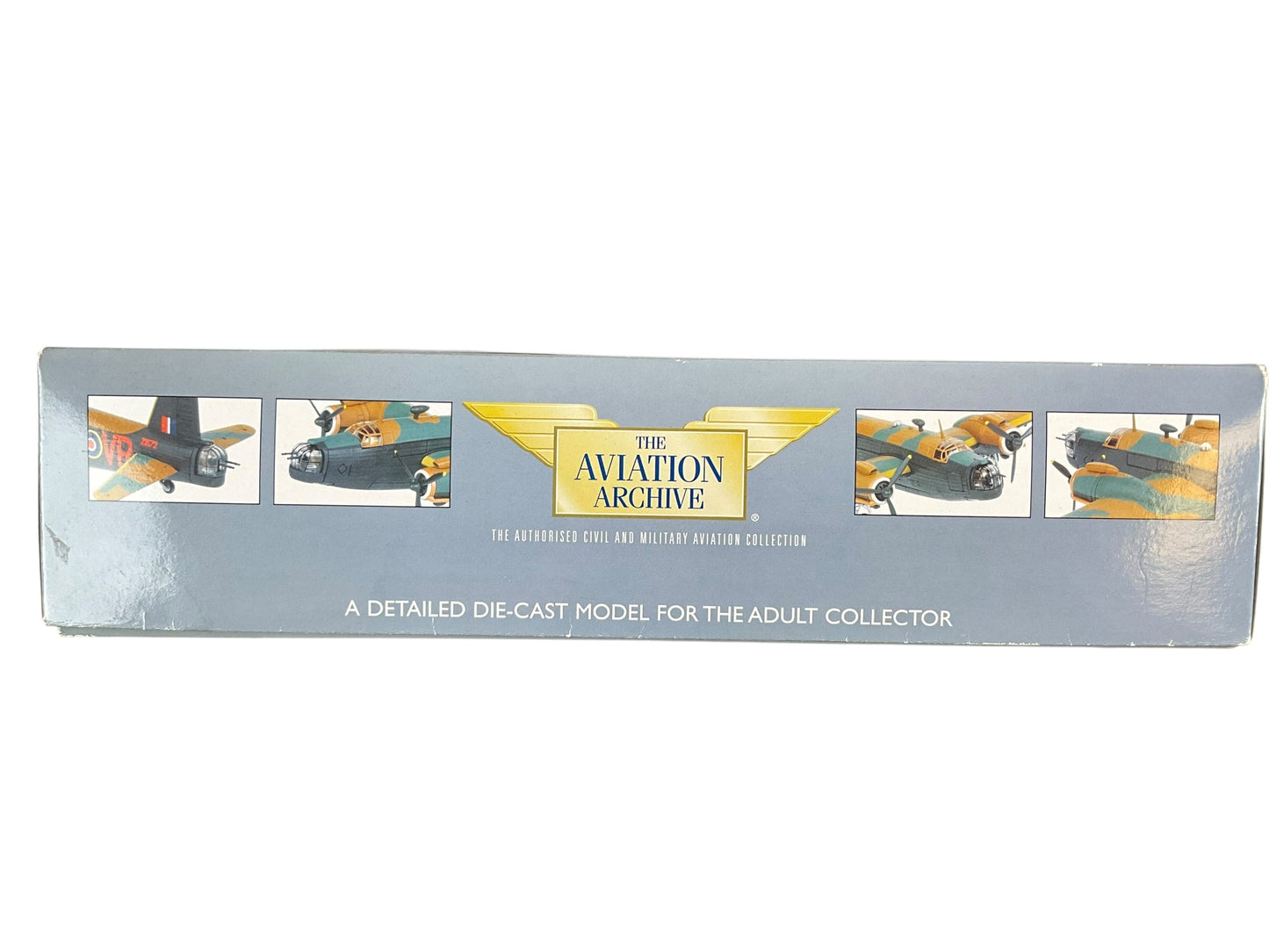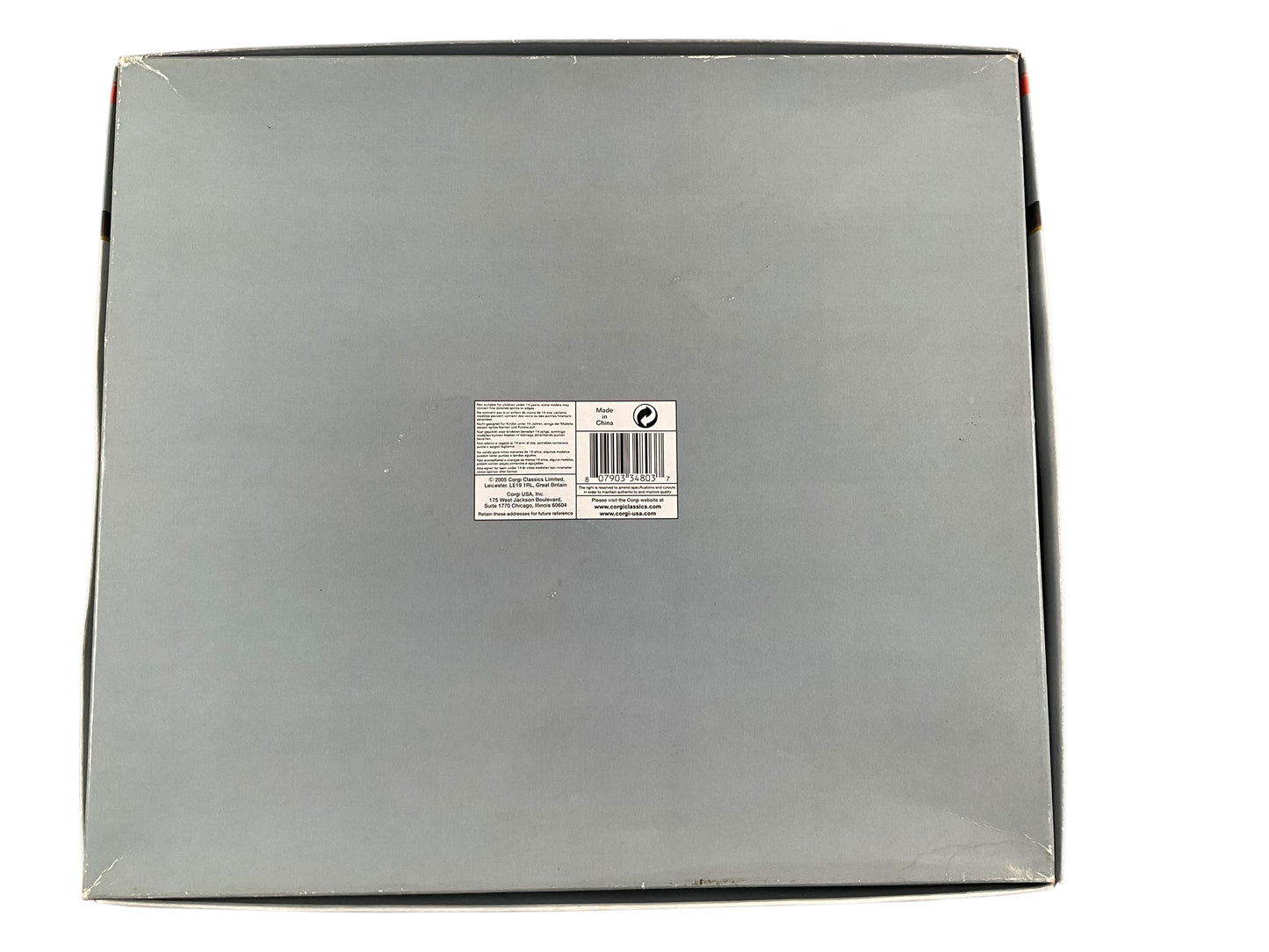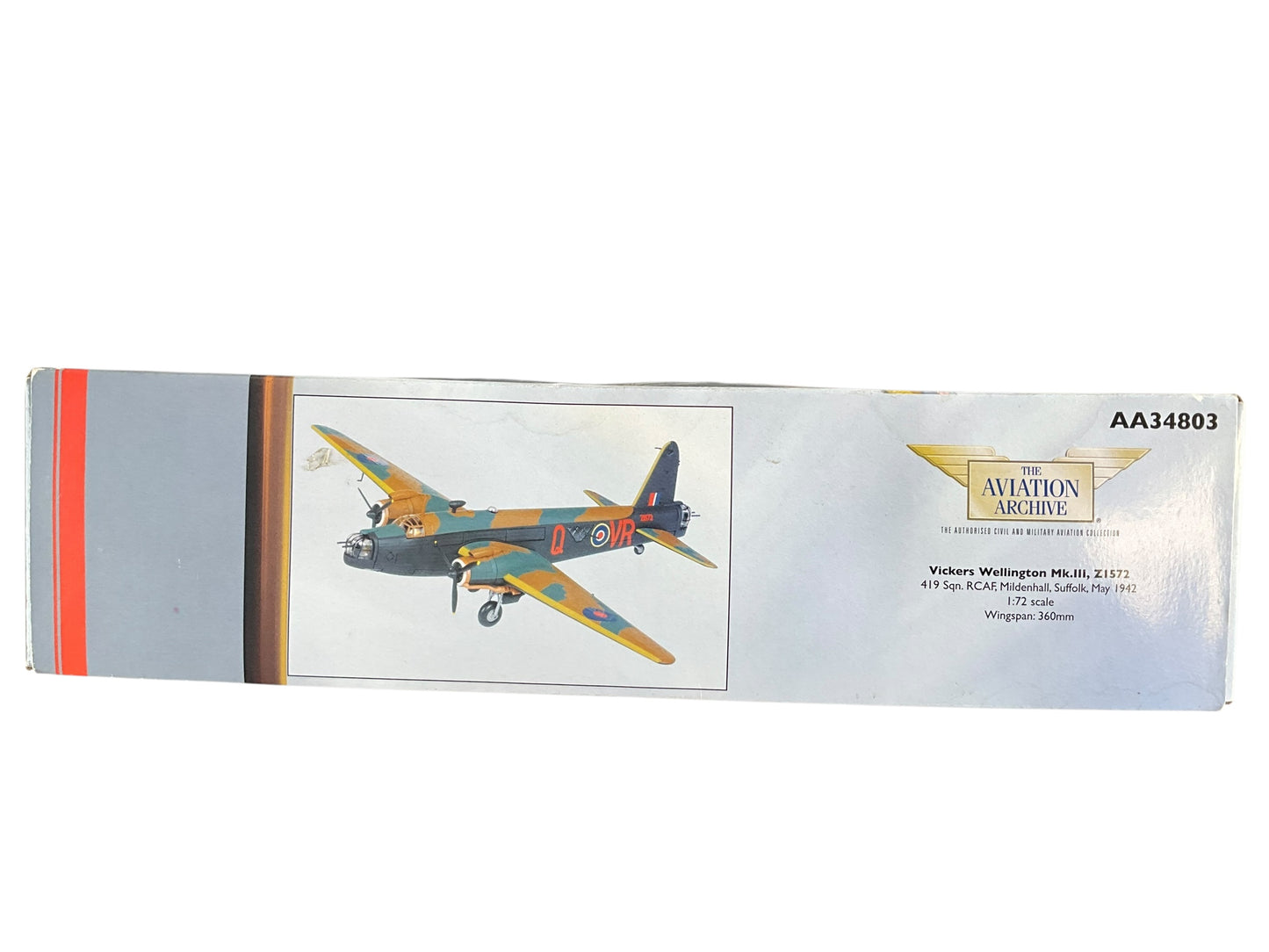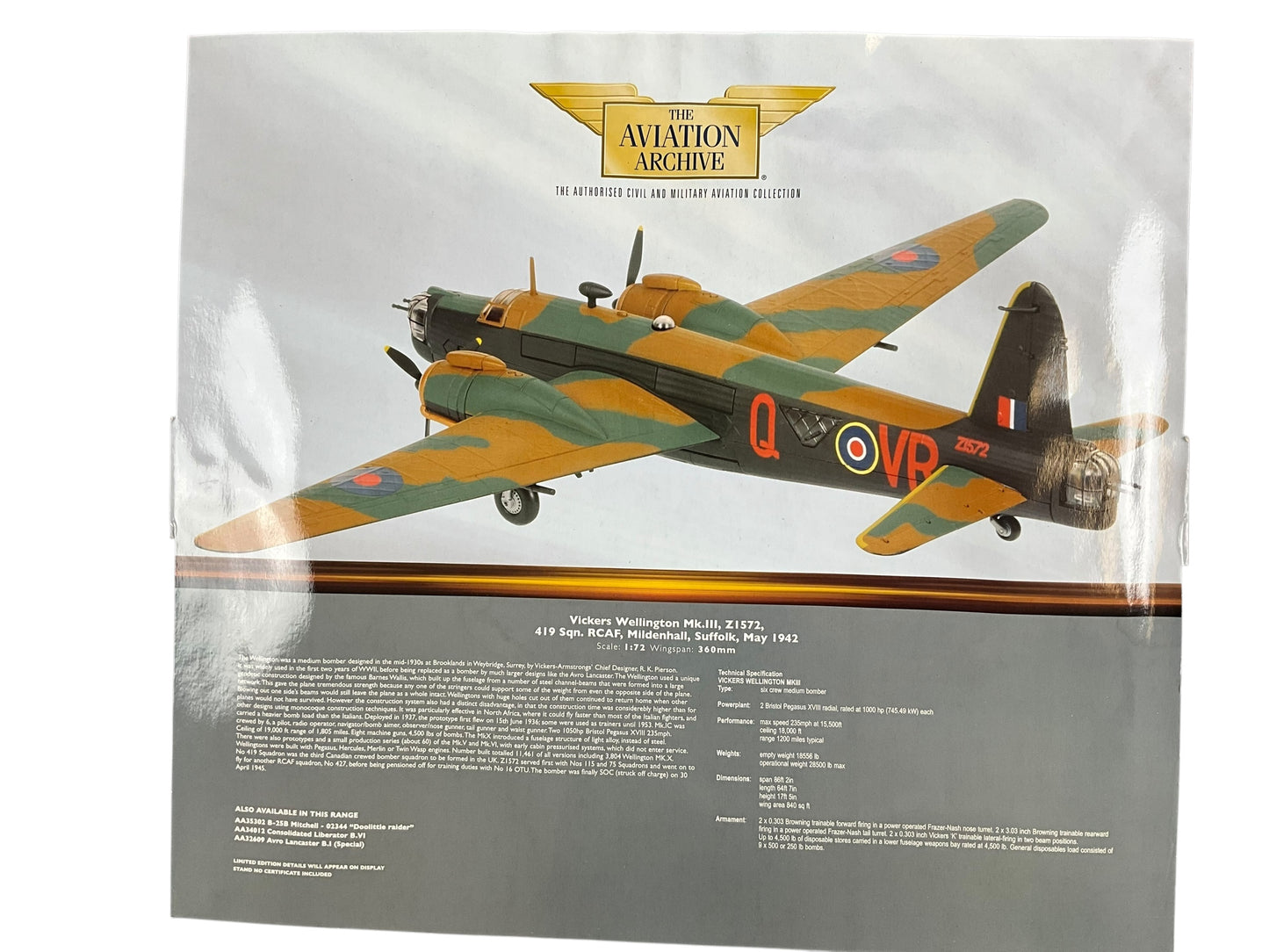airdrop militaria
1/72 Corgi (AA345803) Vickers Wellington Mk.III (Z1572 / VR+Q) 419 "Moose" Sqdn R.C.A.F. Mildenhall, Suffolk May 1942 (Limited Edition #0785 of ONLY 1600)
1/72 Corgi (AA345803) Vickers Wellington Mk.III (Z1572 / VR+Q) 419 "Moose" Sqdn R.C.A.F. Mildenhall, Suffolk May 1942 (Limited Edition #0785 of ONLY 1600)
Couldn't load pickup availability
1/72 Corgi (AA345803) Vickers Wellington Mk.III (Z1572 / VR+Q) 419 "Moose" Sqdn R.C.A.F. Mildenhall, Suffolk May 1942 (Limited Edition #0785 of ONLY 1600)
The Wellington was a medium-range bomber designed in the mid-1930s at Brooklands in Weybridge, Surrey by Vickers-Armstrongs' Chief Designer, R.K.Pierson. It was widely used in the first two years of WWII, before being replaced as a bomber by much larger designs like the Avro Lancaster. The Wellington used a unique geodetic construction designed by the famous Barnes Wallis, which built up the fuselage from a number of steel channels-beams that were formed into a large network. This gave the plane tremendous strength because any one of the stringers could support some of the weight even the opposite side of the plane. Blowing out one side's beams would still leave the plane as a whole intact. Wellingtons with huge holes cut out of them continued to return home when other planes would not have survived. However the construction system also had a distinct disadvantage, in that the construction time was considerably higher than for other designs using monocoque construction techniques. It was particularly effective in North Africa, where it could fly faster than most of the Italian fighters, and carried a heavier bombload than the Italians. Deployed in 1937, the first prototype first flew on 15th June, 1936; some were used as trainers until 1953. Mk1C was crewed by six, a pilot, radio operator, navigator/bomb aimer, observer/nosegunner, tailgunner and waistgunner. Two 1050hp Bristol Pegasus XVIII 235 mph. Ceiling of 19,000ft. Range of 1805 miles. 8 machine guns, 4500lbs bombs. The Mk.X introduced a fuselage structure of light alloy, instead of steel. There were also prototypes and a small production series (abo ut 60) of the MkV and the MkVI, with early cabin pressurized systems which did not e nter service. Wellingtons were built with Pegasus, Hercules, Merlin or Twin Wasp engines. Number built totalled 11,461 of all versions including 3,804 Wellington MkX. No.419 Sqn was the third Canadian crewed bomber squadron to be formed in the UK. Z1572 served first with Nos.115 and 75 squadrons and went on to fly for another RCAF squadron, No.427, before being pensioned off for training duties with No.16 OTU. The bomber was finally SOC (Struck Off Charge) on 30 April, 1945.
Share
